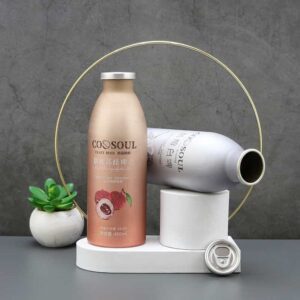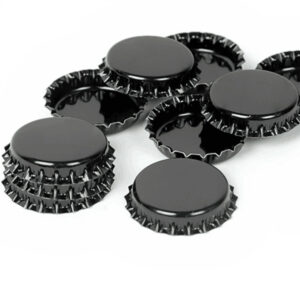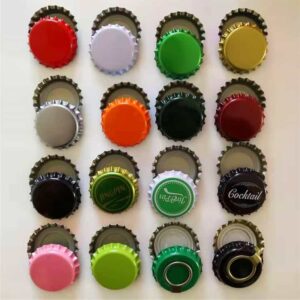Beer packaging plays a critical role in the success of any beer brand. It not only protects the product but also enhances its appeal and communicates the brand’s message. A well-designed beer package can attract new customers, foster brand loyalty, and even influence the perceived quality of the beer itself. In an industry where competition is fierce, having standout packaging can make a significant difference.
This comprehensive guide aims to explore the various facets of beer packaging, from innovative design ideas to practical tips for effective packaging. We’ll delve into the importance of understanding your target audience and how packaging can serve as a powerful marketing tool. Additionally, we’ll examine the different types of containers available for beer packaging, such as glass bottles, cans, and growlers, highlighting their unique benefits and potential drawbacks.
Whether you’re a seasoned brewery looking to refresh your packaging strategy or a new brand seeking guidance on making your mark in the market, this guide will provide valuable insights and actionable advice to help you navigate the complex world of beer packaging.
Section 1 Why Beer Packaging Matters
1.1 The Role of Packaging in Brand Identity
Packaging is often the first point of contact between a consumer and a product, serving as the silent ambassador of the brand. For beer brands, an eye-catching and functional package can make a significant difference in attracting and retaining customers. The design, color scheme, and overall aesthetic of the packaging convey the brand’s values and personality. For instance, a sleek, minimalist design might appeal to craft beer aficionados who appreciate sophistication and quality, while vibrant and bold packaging could attract a younger, more adventurous demographic. Effective packaging not only captures attention but also creates an emotional connection with consumers, encouraging brand loyalty and repeat purchases. Additionally, well-designed packaging can differentiate a brand from its competitors on crowded retail shelves, making it a crucial component of a brand’s marketing strategy.
1.2 Protection and Preservation
The primary function of beer packaging is to protect the product from external factors that can compromise its quality. Light, air, and contaminants are the main adversaries of beer, capable of altering its flavor and freshness. Packaging solutions like brown glass bottles and aluminum cans are specifically designed to shield the beer from UV rays, which can cause spoilage. Airtight seals and caps prevent oxygen from entering the container, which could lead to oxidation and spoilage. Moreover, robust packaging materials safeguard the beer during transportation and handling, ensuring it reaches the consumer in optimal condition. By maintaining the integrity of the beer, effective packaging plays a pivotal role in delivering a high-quality drinking experience, thereby reinforcing the brand’s reputation for excellence.

Section 2 Beer Packaging Ideas
2.1 Innovative Designs
▶ Interactive Labels
Embrace the digital age by incorporating interactive labels that utilize augmented reality (AR) technology. These labels can be scanned with a smartphone app, bringing the label to life with animations, videos, or interactive content. This not only engages tech-savvy consumers but also provides an innovative platform to share the brand’s story, brewing process, or even promotional content like discounts and contests. Interactive labels transform the packaging into an immersive experience, making the brand memorable and engaging.
▶ Eco-Friendly Packaging
In response to the growing consumer demand for sustainability, many beer brands are turning to eco-friendly packaging solutions. Implementing biodegradable or recyclable materials helps reduce the environmental footprint of the product. For example, using plant-based plastics or compostable materials for six-pack rings can significantly reduce plastic waste. Highlighting these eco-friendly practices on the packaging can appeal to environmentally conscious consumers and enhance the brand’s reputation for social responsibility.
▶ Custom Shapes
Stand out on crowded shelves with uniquely shaped bottles or cans. Custom shapes not only catch the eye but also reflect the creativity and uniqueness of the brand. Whether it’s a bottle shaped like a beer mug, a can with an ergonomic grip, or a design inspired by the brand’s heritage, custom shapes can create a distinctive identity. This creativity can spark curiosity and drive impulse purchases, setting the brand apart from more traditionally packaged competitors.
2.2 Sustainable Packaging
▶ Lightweight Glass
Reducing the weight of glass bottles can significantly lower the environmental impact of beer packaging. Lightweight glass requires less raw material and energy to produce and transport, resulting in a smaller carbon footprint. This not only benefits the environment but also reduces shipping costs, making it a win-win for both the brand and the planet. Communicating these benefits on the packaging can further appeal to eco-conscious consumers.
▶ Recycled Materials
Utilizing recycled glass and paper for bottles and labels is another effective way to promote sustainability. Recycled materials reduce the demand for virgin resources and minimize waste. Brands can highlight the use of recycled materials on their packaging to attract environmentally aware consumers. This practice not only supports circular economy principles but also reinforces the brand’s commitment to environmental stewardship.
▶ Refillable Containers
Encourage sustainability by offering refillable containers. This approach involves customers returning their empty bottles to be cleaned and refilled, reducing waste and promoting reuse. Refillable glass bottles can be a particularly attractive option for local breweries and taprooms. Implementing a deposit return scheme can incentivize consumers to participate, fostering a culture of sustainability and loyalty to the brand. Highlighting the environmental benefits and potential cost savings can make refillable containers an appealing choice for eco-minded customers.

Section 3 Tips for Effective Beer Packaging
3.1 Understand Your Audience
Knowing your target market is crucial. For instance, craft beer enthusiasts might appreciate detailed information about the brewing process on the label, while mainstream beer drinkers might prioritize bold, eye-catching designs.
3.2 Prioritize Functionality
○ Ease of Use: Ensure that the packaging is easy to open. If using a beer bottle opener, consider including instructions on how to open a beer bottle without a bottle opener.
○ Portability: Design packaging that is convenient for consumers to carry and store.
3.3 Highlight Brand Identity
○ Consistent Branding: Use consistent colors, logos, and fonts across all packaging materials.
○ Unique Selling Proposition (USP): Clearly communicate what sets your beer apart, whether it’s the flavor, ingredients, or brewing method.
Section 4 Types of Containers for Packaging Beer
4.1 Glass Bottles
○ Standard Beer Bottle: The traditional beer bottle is often brown or green to protect the beer from light.
○ Green Bottle Beer: Some brands use green bottles for a distinct look, but it’s important to note that green bottles offer less protection from light compared to brown bottles.
4.2 Cans
○ Aluminum Cans: Lightweight and easily recyclable, cans are a popular choice for many breweries.
○ Innovative Can Designs: Use unique graphics and shapes to make your cans stand out.

4.3 Growlers
○ Glass Growlers: Popular for craft beer, growlers allow consumers to purchase fresh beer directly from the brewery.
○ Stainless Steel Growlers: Offer enhanced protection and insulation for the beer.
Section 5 Beer Bottle Labels
5.1 Designing Effective Labels for Beer Bottles
Ensure all text on the label is clear and legible. Choose easy-to-read fonts. Ensure there is sufficient contrast between text and background. Highlight important information like the beer’s name and type. Avoid overcrowding the label with too much information. Prioritize essentials to create a clean design.
Include necessary information such as alcohol content and ingredients. Display health warnings and volume of the beer. Indicate any allergen information. Ensure all regulatory information is visible. This builds trust with consumers and demonstrates transparency.
Use the label to tell your brand’s story. Highlight traditional brewing methods or the origin of ingredients. Share anecdotes about the brewery’s founding. A compelling brand story creates an emotional connection with consumers. This connection can turn casual buyers into loyal customers.
5.2 Trends in Beer Bottle Labels
Minimalist designs are clean and simple. They focus on the essentials. Use white space strategically to highlight key elements like the beer’s name and logo. Minimalism conveys sophistication and quality. Brands often use high-quality materials and finishes to enhance the tactile experience.
Collaborate with local artists to create unique labels. Artistic labels make the bottle stand out on the shelf. They often feature intricate illustrations and vibrant colors. These designs reflect the brand’s personality and ethos. Supporting local artists can strengthen community ties.
5.3 Additional Considerations for Beer Bottle Labels
The choice of label material impacts the consumer’s perception. Use premium materials like textured paper and foil accents. Embossed elements enhance the tactile experience. Waterproof labels are essential in cold and wet environments.
Integrate interactive elements into labels. QR codes can lead to exclusive content. Augmented reality features and scratch-off promotions can engage consumers. These elements provide additional marketing opportunities.
Create seasonal or limited edition labels to generate excitement. Feature special designs and festive themes. Collaborate with other brands or artists. Limited edition labels can encourage collectors and loyal fans to try new varieties.
Effective beer bottle label design blends clarity, compliance, and creativity. Ensure readability and adhere to regulatory requirements. Tell a compelling brand story. Stay abreast of trends like minimalist and artistic designs. A well-designed label is an investment in the brand’s identity and relationship with customers. It is a crucial element of successful beer packaging.

Section 6 Beer Bottle Caps
6.1 Crown Caps
Crown caps are the most common type of cap used on bottled beers. They feature a crimped edge that securely seals the bottle, preserving the beer’s freshness and carbonation. These caps are widely used due to their cost-effectiveness and reliability. Crown caps come in a variety of colors and can be customized with printed logos or designs, adding an extra layer of branding to your beer packaging. Their simplicity and effectiveness make them a staple in the beer industry, suitable for both mass-market and craft beers.

6.2 Swing Top Caps
Swing top caps, also known as flip-top caps, are reusable and often found on specialty beers and homebrews. These caps consist of a ceramic or plastic stopper with a rubber gasket, attached to the bottle with a wire bail. The swing top mechanism creates an airtight seal, maintaining the beer’s quality and carbonation. Swing top caps add a vintage and artisanal touch to the packaging, appealing to consumers who appreciate traditional brewing methods. They are not only functional but also enhance the overall aesthetic of the bottle, making them a popular choice for premium and limited-edition brews.
6.3 Branded Caps
Branded caps offer a unique opportunity to enhance brand visibility and recognition. Printing your logo or unique designs on the caps can make your beer stand out, even when the bottle is stored cap-side up. This branding extends the marketing reach of your product, ensuring that every aspect of the packaging reflects your brand identity. Branded caps can be used in conjunction with other branding elements on the bottle and label, creating a cohesive and memorable presentation.
6.4 Color Coding
Color coding your beer bottle caps is an effective way to indicate different beer varieties. This visual cue helps consumers quickly identify their preferred beer type without needing to read the label. For example, you might use green caps for an IPA, blue for a lager, and red for a stout. Color coding not only aids in product differentiation but also adds an element of organization and convenience for both retailers and consumers. This strategy can be particularly useful for breweries that offer a wide range of beer styles, simplifying the selection process for customers.

Section 7 Beer in Green Bottle
7.1 Advantages
○ Aesthetic Appeal: Green bottles have a distinct and attractive appearance that can make a beer brand stand out on the shelf. The color green is often associated with freshness, quality, and tradition, which can enhance the perceived value of the beer inside. Many consumers find green bottles visually appealing, and this aesthetic quality can influence their purchasing decisions.
○ Historical Significance: Green bottles have a long history in the beer industry, particularly in Europe. Many iconic beer brands have used green bottles for decades, creating a sense of nostalgia and heritage. This historical significance can lend an air of authenticity and prestige to the brand, appealing to consumers who value tradition and craftsmanship.
7.2 Disadvantages
○ Light Protection: One of the main drawbacks of green bottles is their reduced ability to protect beer from light exposure. Unlike brown bottles, which offer superior protection against UV rays, green bottles allow more light to penetrate. This can lead to a chemical reaction known as “lightstruck” or “skunky” beer, where the flavor is negatively affected. For this reason, beers in green bottles must be stored and transported with extra care to avoid light exposure.
○ Perception Issues: Despite their aesthetic appeal and historical significance, green bottles can sometimes be perceived as inferior to brown bottles due to their lesser light protection. Some consumers are aware of the potential for lightstruck beer and may associate green bottles with lower quality. This perception can be a challenge for brands that choose to use green bottles, requiring them to educate consumers about their quality control measures and the steps they take to ensure the beer remains fresh.
7.3 Mitigating Disadvantages
○ Protective Packaging: To mitigate the light protection issue, breweries can use additional packaging to shield the green bottles from light. This can include wrapping bottles in opaque materials, using boxes for transportation, or employing UV-blocking coatings on the glass. These measures can help preserve the beer’s quality and reassure consumers about the product’s integrity.
○ Marketing and Branding: Effective marketing and branding can help overcome the perception issues associated with green bottles. By highlighting the brand’s commitment to quality and tradition, breweries can leverage the historical significance of green bottles to their advantage. Sharing stories about the brand’s heritage, brewing techniques, and quality control processes can build consumer trust and loyalty.
○ Examples of Successful Use: Many renowned beer brands successfully use green bottles to create a strong brand identity. For instance, Heineken, a global beer giant, has built its brand around the iconic green bottle, associating it with quality, consistency, and a rich brewing tradition. Other brands like Carlsberg and Peroni have also effectively used green bottles to distinguish their products in the marketplace.
Conclusion
Effective beer packaging is a cornerstone of any successful beer brand. It serves not only to protect the beer but also to enhance its appeal and communicate the brand’s message. Innovative designs like interactive labels and eco-friendly packaging can attract environmentally conscious consumers and tech-savvy individuals. Understanding the impact of different types of containers, from traditional glass bottles to lightweight cans, allows breweries to make informed choices that align with their brand values and target audience.
Designing effective labels involves a careful balance of clarity, regulatory compliance, and storytelling. Trends such as minimalist and artistic labels can further elevate a brand’s image, making it stand out on crowded shelves. Additionally, thoughtful choices in bottle caps, such as branded and color-coded options, can add unique touches to the packaging. The use of green bottles, while presenting some challenges, can enhance a brand’s aesthetic appeal and historical significance.
By focusing on these elements, beer brands can ensure their packaging not only meets practical needs but also captivates and engages their target audience. Well-executed packaging is an investment in the brand’s identity, helping to attract new customers, foster loyalty, and maintain a high-quality drinking experience. For more information on how to optimize your beer packaging, contact us at Smilebottles. Let us help you create packaging that truly stands out and resonates with your consumers.










